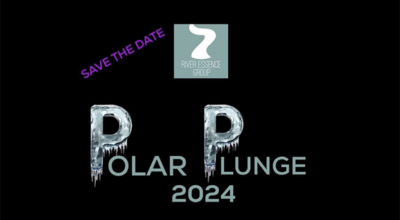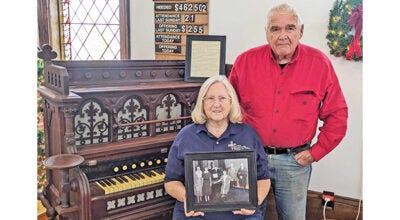Carlock: Little profit found in $1M tour
Published 9:00 am Saturday, October 6, 2012
Welcome to part two of my coverage of perhaps the most exciting thing to happen on the artist side of the music business this year: Amanda Palmer. If you don’t know who the Dresden Dolls singer is, check out YouTube for her new single release, “Want It Back,” in all of its Not-Safe-for-Work glory. This video will quickly indoctrinate the viewer into all things Amanda including her penchant for teasy, full-frontal nudity and unapologetic armpit hair. One part modern burlesque, one part Kurt Weill, one part stunning aesthetic, and one huge part controversy always gets Palmer attention.
Last week, I told you about the controversy surrounding the $1.2 million Kickstarter recipient’s attempt to engage musicians for non-cash compensation. This week, let’s take a look at the rough accounting on a $1 million budget, according to Palmer’s blog, written before her Kickstarter pledging ended. To anyone with a mind for business, this will speak a lot about what it costs to bring a professional, art-intensive music artist to market. For indie artists with only a dream, prepare to be seriously bummed out.
First, look at the payback of the eight months of her record’s production costs and associated band costs, pre-Kickstarter. That adds up to $250K. Yep, swallowed hard on that one didn’t you! This funding was all paid by her personal lines of credit with friends and associates she’d developed over the years. So it appears her initial Kickstarter goal of $100K was a hope to offset those costs, but with the bigger vision of products and services she offered through Kickstarter, she won big. Let’s take a look at what she offered beyond “just” a CD:
Sellable goods/services (all costs include shipping):
7,000 plus: high-end CD packages and thank you cards: $105K. Unit cost $15, sell $25.
1,500: vinyl albums and thank-you cards: $30K. Unit cost $20, sell $50.
2,000 plus: artbooks: $80K. Unit cost $20, sell $100.
100: Neil Gaiman & Kyle Cassidy deluxe high-end photobooks: $30K. Unit cost $300, sell $1000.
100: Artist-painted turntables with vinyl and CD packages included: $15K. Unit cost $200, sell $500.
300: Art and crafts with 7-inch vinyl packages: $30K. Unit cost $100, sell $250.
But the big moneymaker in all of this was the (36) private house parties Palmer sold for a total of $180K. She plans to couch surf with friends when she travels, making her only expense in this part of her offerings (20) flights estimated at $500 each, for a total cost of only $10K.
Aside from the cost of “sellables” and personal loans, her support team must also be paid. Her graphic design team on all the products cost $20K; the licensing cost of the artwork in the tour’s traveling art show, also used in product photography, cost her $20K; and her legal and management team (earning 15 percent, some gross, some net) cost her about $150K.
Next, subtract the cost of product promotion and marketing. This includes four to five music videos, perhaps the most important marketing tool for an artist today, altogether costing $100K. Then, add in the line item labels call “tour support” — which is the shortfall cost from her six-city live music and art tour. Thankfully the shortfall’s only projected to be $10K. And you thought every show put money in the artist’s bank account. Now you see why she was “crowdsourcing” additional, non-critical tour musicians — her tour, like many, is at a deficit.
Last but not least, Kickstarter and Amazon will charge combined pledge service fees totaling 10 percent for turning the pledges into cash, costing $100K. But wait, there’s more: so far we have neither included Web design for the project launch, salaries for two full-time staffers, tour equipment and cases, stage costuming, backdrops, nor a host of miscellaneous costs that may add up on tour.
So essentially, at the $1 million mark, this is dangerously close to being a break-even venture. My math added up $950K in expenses, even excluding certain costs, to collect that $1 million.
“OK, well, what about the extra $200K she got, over the million? That’s gravy!” you say. Not so fast! First, we have to deduct 25 percent, or $50K, for legal, management and pledge service fees on this additional amount; deduct $100K to cover those two full-time staffers for one of the two years, pay $10K for Web services and approximately another $15K for show costuming and other tour miscellaneous. That leaves $25K. Add that to the $50K she kept from the first $1 million, and all this activity leaves her only $75K — or $37.5K/year, pretax. Didn’t we start with $1.2 million? Is this what it costs to make art and music and play some headlining shows internationally? Yes and yes. Note: There is no radio promotion on this list.
Now to the “crowd-sourced” musicians she’s decided to pay in the end: let’s give 10 musicians $150 for each of the six shows, inclusive of their travel and any rehearsal. Trust me, that number isn’t bound to send many pros leaping into their car for the gig, another reason she’s crowd-sourcing for “fan” musicians. Even so, it’s still $9K extra for only six shows, lowering her profit to just over $33K/year for two years, pretax.
So, did she get rich? Not by a long shot. But a lot of people were hired, a lot of art was created and an artist’s grand vision has come to life. Eye opening, eh?
And what’s the moral of this music business story? “You never know when an extra 200 grand just might save the day.”
Dave Carlock is a 25-year veteran of the entertainment business whose work as a recording engineer and producer, touring musician, and songwriter made him Googleable. His continuing work as an Independent Content Creator of Sound and Image has earned him a Grammy Award certificate, two Platinum Record Awards, and a Paragon Award in advertising. Currently, he brings national and international artists to make records and music videos at his production studio in the Benton Harbor Arts District. www.davecarlock.com





